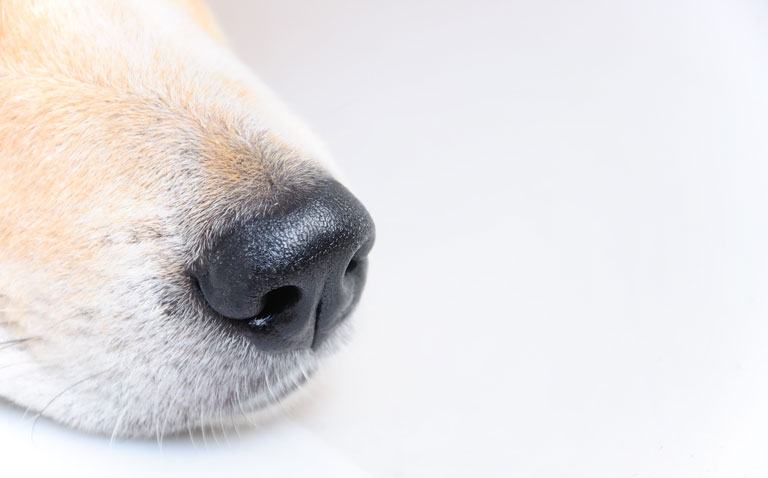A distinct breath and body odour from those infected with COVID-19 can be detected by trained dogs and could be used to rapidly screen a large number of people.
Controlling the spread of COVID-19 at ports of entry to a country is an important means of reducing the spread of the virus. While control is currently achieved through the use of PCR testing, this strategy is slow, especially when there is a need to test a large number of individuals, e.g., at airports or public venues. In addition, even though lateral flow testing does not require laboratory confirmation, it is still costly and, more importantly, it is questionable whether the use of either of these current test methods is sustainable over the longer term.
It has been known for several years that respiratory infections from either bacteria or viruses lead to the generation of volatile organic compounds (VOCs) which can be detected by trained dogs. In fact, a small study has shown how trained dogs are able to identify respiratory secretion samples from hospitalised patients with COVID-19. Building upon that earlier study, a team from the Department of Disease Control, London School of Hygiene and Tropical Medicines, aimed to assess whether there are specific odours associated with COVID-19 infection and more importantly, whether dogs could be trained to identify these odours and discriminate between infected and non-infected individuals. Samples of breath odours were collected through participants wearing a single-use protective, disposable face mask. In addition, skin odours were collected from a pair of nylon socks worn by participants. After both collections, the odours were individually wrapped in foil and frozen by the participants. VOCs collected from the socks of asymptomatic or mildly infected patients, together with samples from uninfected individuals were analysed using a sensor array of 12 organic semi-conducting sensors for the most likely chemicals associated with COVID-19 infection, i.e., ketones and aldehyde compounds. The dogs were then trained to detect differences in VOCs between infected and uninfected samples. The primary outcome was the sensitivity and specificity for the dog’s ability to distinguish between the two types of samples.
Findings
A total of 3,921 adults were enrolled in the study with odours collected from 1097 COVID-19 infected and 2031 uninfected participants. The sensor array was able to detect differences between infected and uninfected samples with a sensitivity of 99% and a specificity of 98%. The trained dogs were also able to distinguish between samples with a high degree of accuracy. Overall, and based on a sample of 200 infected and uninfected individuals, the dogs achieved a sensitivity range of 82 – 94% and a specificity range of 76 % to 92% compared to the reference PCR test. In addition, the dogs accurately detected the B.1.1.7 COVID-19 variant 79% of the time.
The authors noted how their findings clearly demonstrated how trained dogs can distinguish between the odours produced by infected and uninfected individuals with a high level of accuracy. As an example, they estimated that two dogs could screen 300 people in 30 minutes and PCR testing would therefore only be employed for those identified as positive by the dogs. The authors concluded that trained dogs could be used as an additional tool for COVID-19 testing strategies and which was particularly suited to large groups where rapid testing was required.
Citation
Guest C et al. Using trained dogs and organic semi-conducting sensors to identify asymptomatic and mild SARS-CoV-2 infections. 2021










